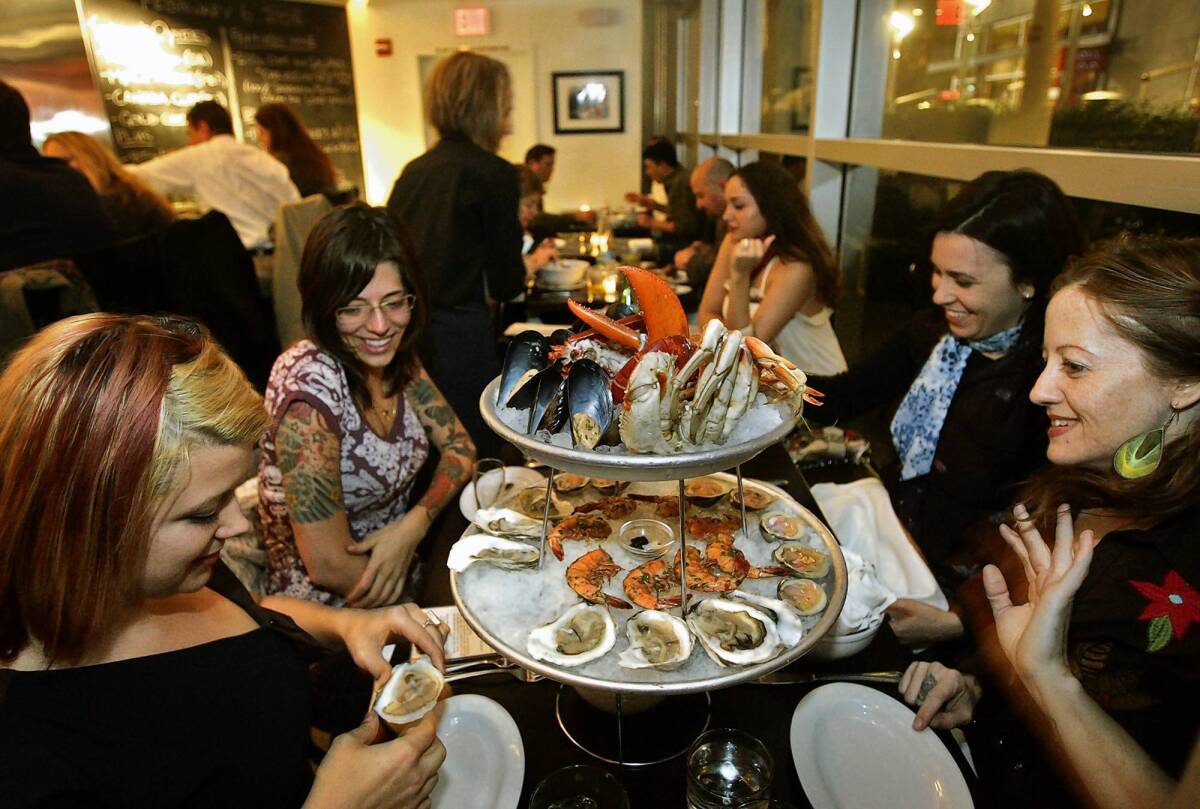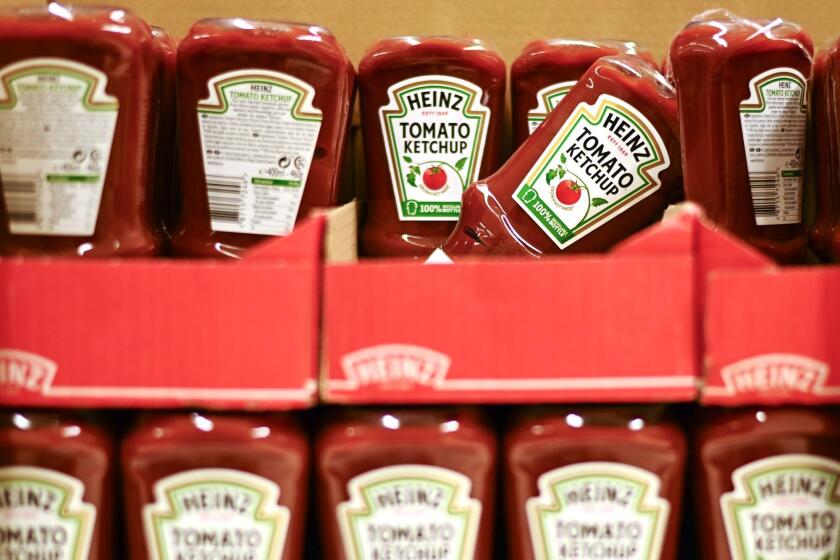For dining out, the pleasure of a singular choice beats the ‘foodie pass’

- Share via
Everybody has decided to eat like a restaurant critic. And I’m here to say … stop. You’ll get a better meal.
There’s something so convivial about sitting down together to eat the same foods at the same time. Conversation isn’t fractured by plates whizzing around the table or by one person trying to cajole a bite from someone who prefers not to share.
Once I became a restaurant critic, I hardly ever got to eat that way. Because I needed to taste as many dishes as possible on one visit, I always had everyone at the table order something different — so I could have a taste. Helpful guests would insist on cutting me a bite or two before I could intervene. Deconstructed like that, nothing tastes the same.
There was no getting around it: In order to taste the dishes as the chef intended, we had to pass the plates. That behavior used to be a dead giveaway in restaurants, especially hushed high-end establishments. A waiter would inevitably rush over to “help” us trade plates mid-air and rush back with appropriate silverware.
But now that kind of sharing doesn’t stick out at all, because practically every restaurant enthusiast indulges in what has become known as the “foodie pass.”
Tasting 15 or 27 dishes in a single meal, each of which may have several components, is unnatural. I realize there are some tasting menus that long, but in that case the dishes have been orchestrated to make sense together. Otherwise, at the end of the night you can end up feeling as if you’ve been turned upside down like a cocktail shaker.
There are other reasons for simpler ordering too. I remember going to dinner with Barolo producer Angelo Gaja somewhere far out in the country in Piedmont. We were a big table, maybe eight or 10. The owner came out and talked about the wild mushrooms he had, the possibility of truffles, his wife’s agnolotti.
Of course, we all wanted to order something different and to try everything. Gaja intervened, very sensibly I thought, to say that in order not to tax the kitchen, we should double up and order some of the same things. These country places don’t have a brigade of cooks in the kitchen. He didn’t want the restaurant to be thrown into a panic when an order for 10 different dishes to be served at the same time came in.
We’ve grown up thinking restaurants should be able to prepare myriad dishes on a moment’s notice. Chefs are finally realizing that their food will show better if the menu is shorter. Which brings us to the tasting menu.
Alice Waters’ Chez Panisse has kept the same formula for years. Downstairs in the restaurant, the four-course menu is prix fixe, without choices, and it changes every day. The waiter may hand you a menu so you can see what you’re going to be eating, but there are no decisions to be made other than choosing a wine. You can just sit back and converse, savoring each dish as it comes.
If you go out to dinner in Paris and it’s an important restaurant, the host will often choose the menu for the table. I learned this long ago when two other critics and I met Paris food writer Patricia Wells for dinner at the three-star L’Ambroisie.
We sat down in the beautiful room, took up the menus and started to negotiate who would get what. She quickly shot that idea down. She’d already discussed the menu with the chef, and we’d all have the same dishes. Just four? How could we write about the restaurant?
But as we unfurled our napkins and took that first sip of Chablis, we forgot all about that professional tic of trying as many things as possible and settled in to enjoy each of his dishes — together. No flying plates. No surreptitiously keeping track of who had grabbed more of the foie gras.
What a relief. What a pleasure.
More to Read
Eat your way across L.A.
Get our weekly Tasting Notes newsletter for reviews, news and more.
You may occasionally receive promotional content from the Los Angeles Times.










